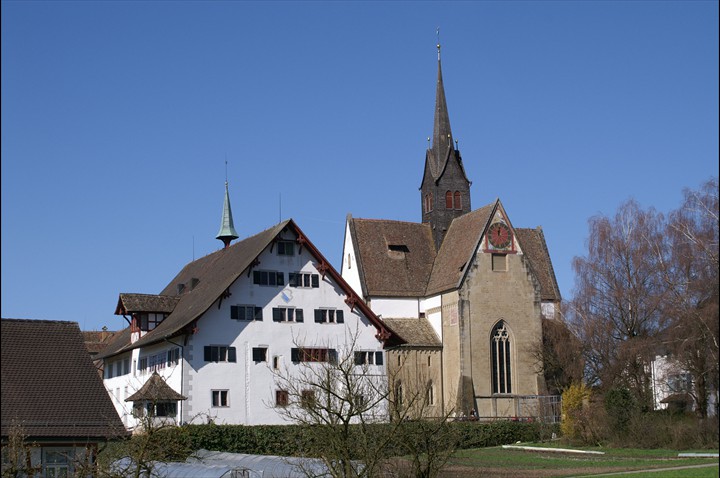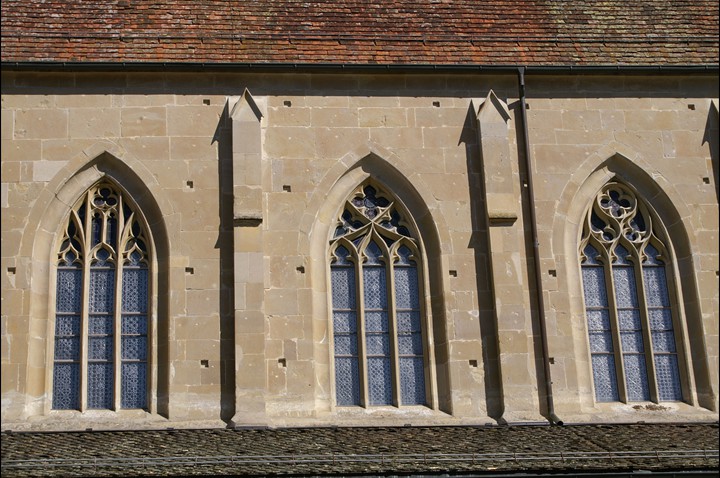The former Cistercian monastery Kappel
is located near Lake Zug at the southern foot of the Albis chain in the canton of Zurich.
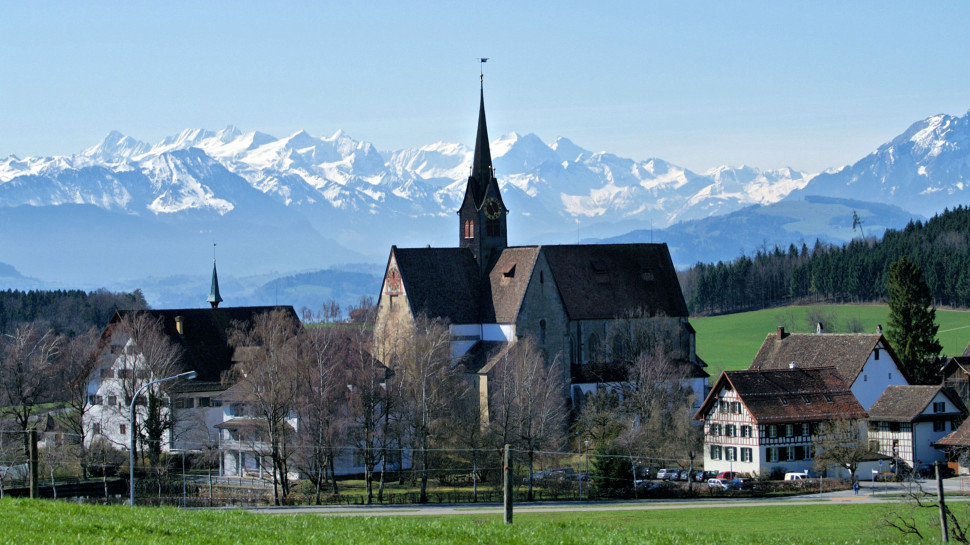
Around 1185 Cistercian monks from Hauterive came to build the Kappel monastery. The founders were the barons of Eschenbach-Schnabelburg, a noble family of the Swiss midlands with the ancestral castle of Eschenbach near Inwil (LU). They also owned the "Schnabelburg" near the village of Hausen am Albis. The monastery served as their burial place.
The word "Kappel" refers to a chapel that probably existed before the founding of the monastery and had been given to the young convent by the barons of Eschenbach-Schnabelburg.

Memorial picture of the members of the von Eschenbach family buried in Kappel, dated 1434, formerly hung in the monastery church - now in the Zurich National Museum.
The picture was probably originally even longer. On the left side, in my opinion, the Mother of God Mary is missing, in front of whom all the people of Eschenbach kneel. On the far left you can still see a piece of cloth and the panel below is clearly cut off - they were probably all the same length. For comparison a similar picture from the Cistercian monastery Lilienfeld. Here the Babenberg family of founders kneels before Mary. All Cistercian churches have her as their patroness.
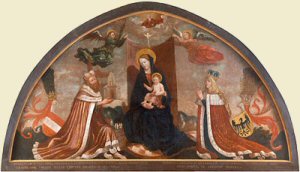
During the Reformation the monastery was devastated and plundered several times and finally abolished.
The two Kappel wars were about the supremacy of religion. The first could be ended without bloodshed thanks to mediation. The Reformed Zurich and Catholic Central Swiss people ate Kappel milk soup together.
In Oct. 1531 the Catholics decided to attack the people of Zurich because of a food blockade and so the 2nd Kappeler War began. The Zurich people, who arrived too late, were devastatingly beaten. Zwingli was also among the approximately 500 Zurich citizens who died.
Around 1527 the monastery became a poorhouse, first under the patronage of Zurich and from 1836 under the Knonau charitable society.
In 1983, the Evangelical Reformed National Church established a seminar hotel and education centre in the historic buildings.
Today the Gothic church is rather bare and empty. It is often used as a concert hall.
In the vault of St. Stephen's Chapel, in the choir of the Gothic church, a coat of arms is particularly striking, as it reminds one of the Globi figure. These are painted coats of arms with crest decorations of the Gessler von Brunegg.

View over the cloister courtyard to the church and the east wing of the convent buildings. On the ground floor of the east wing adjacent to the church are the Hallwil Chapel (burial chapel of the Hallwil castellans) and the chapter hall (on the right edge of the picture), in front of whose entrance were the graves of the Eschenbach family.
View with Lake Zug
View from the Albishorn to the Zugersee. In the background the Pilatus, on the right front the monastery Kappel.
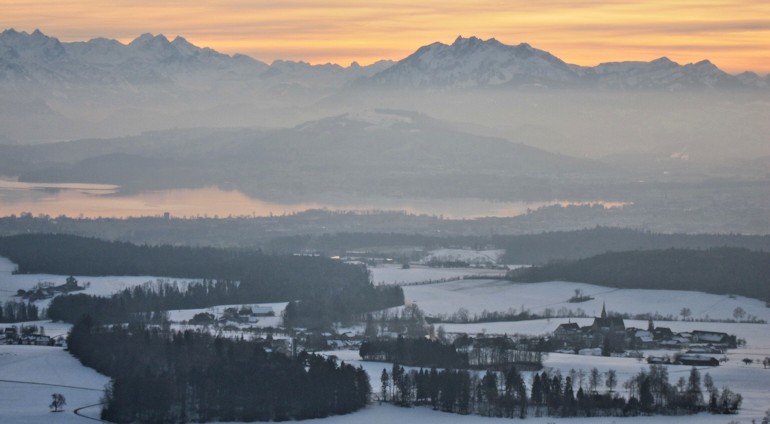
In the first half of the 19th century the Austrian painter Ferdinand Waldmüller was here. He painted the view of Lake Zug. The viewpoint is about 800m east of the Kappel Monastery.
Photo: G. Eichinger April 2010

